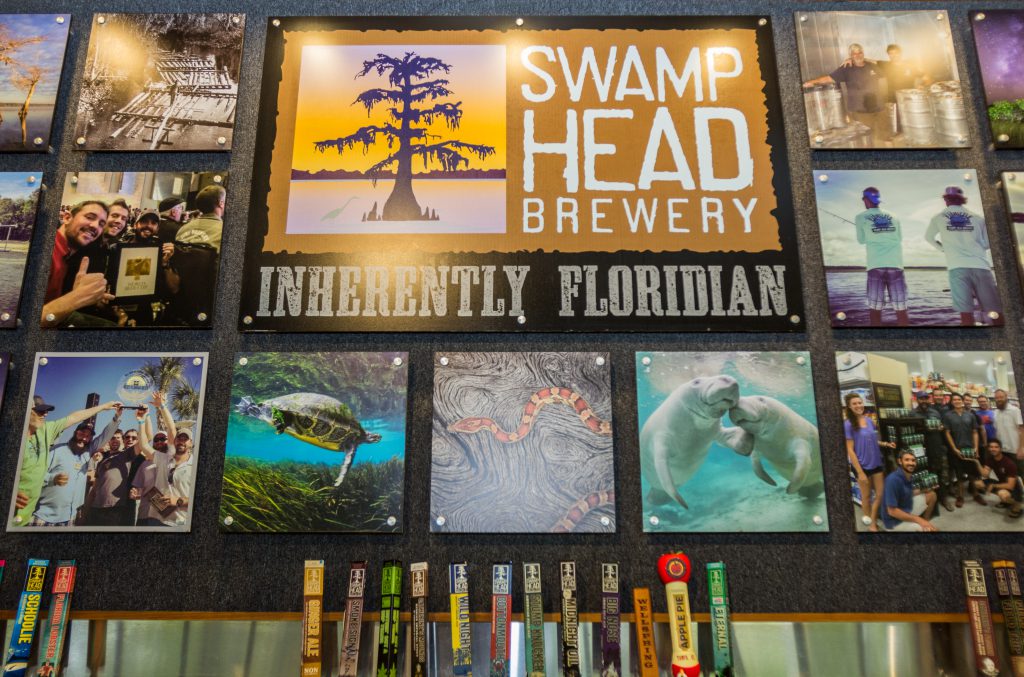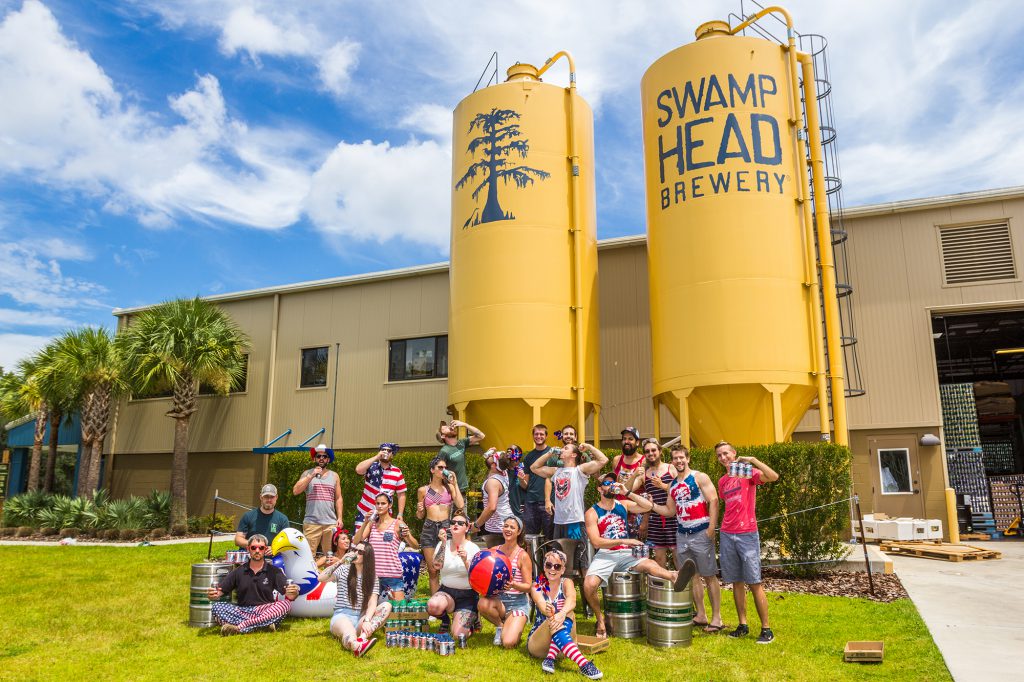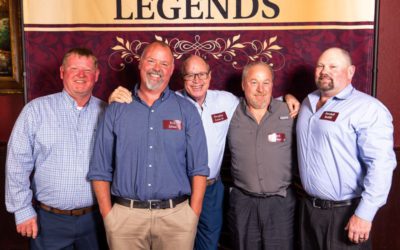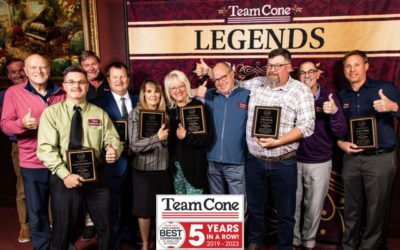It has been roughly ten years since Gainesville native and University of Florida Alum Luke Kemper got the idea to open Swamp Head Brewery, the city’s first production brewery.
Kemper says that the idea for Swamp Head Brewery began to take shape when he experienced the social beer culture in Colorado. “I went to school out in Boulder, Colorado,” Luke recalls. “My brother was always bringing down beer when we would hang out.” The amber ales and wheat beers of the Mile-High State made an impression on Luke. “Long story short – I got to see how Colorado breweries were making beer, but they were also impactful in the community.” The idea of community impact from a brewery stuck with Luke when he came home to Gainesville.

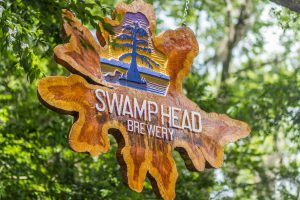
Luke was then reminded of Craig Birkmaier, a family friend who was an award-winning homebrewer. “During that time period, Craig had been homebrewing in his garage and was winning medals on the homebrew competition circuit. We sat down to talk about making a brewery. I told him that I knew nothing about making beer and little about running a business, but I was confident I knew what types of beers people would like to drink.” After that formal meeting, Luke and Craig decided to move forward with Swamp Head Brewery.
From Humble Beginnings in the Swamp
From that meeting in 2008, Swamp Head Brewery was on its way to fruition. Luke remembers, “I was able to get together a little money and was able to hire Craig as a brewer. We found a little warehouse space in Gainesville.” After that, they needed a brewing system. “We found a brewing system south of Ocala in The Villages, the old Spanish Springs Brewing Company equipment. They had a 10-barrel brewing system – very beautiful, way too pretty for us.” From there, Luke and Craig went down to retrieve the system and to learn a few things about it – starting by cutting out the system. “We actually went down there and took the system out, and that gave us a good idea on how to put things back in.” Luke thinks of this as the first time that the reality of the brewery came together. “We got to take everything apart and a rigging company came and hooked everything up and put it on trailers. That’s when everything sunk in. ‘This is really happening.’ I had already taken the money out and we had the equipment, we just had to go and make beer with it.”
Moving the system was the beginning of the brewery, but there was more work to be done. Luke remembers those days, “moving to Gainesville, we spent a year getting the system assembled – we basically had one employee and we were working day and night to get it going.” It would take almost a year from the time the equipment got to Gainesville to the time Swamp Head Brewery sold its first beer. Luke remembers the timeline because so much happened during those first months. “August 2008 was when we went down and started disassembling the equipment from Spanish Springs. Towards the 4th quarter of 2008, we had the equipment installed and sold the first batch of beer November 18th, 2009. Almost two years from the time the company started on paper until we were selling beer.”
Luke admits that there were hurdles Swamp Head Brewery had to overcome in those early days. Luke recollects, “The biggest thing for us back then was that nobody knew what opening a craft brewery meant. Whether it was your local auditing office or the offices in Tallahassee. The concept was so new to them. That has changed so much now because the path has been paved. Everything for us was chopping down proverbial trees to make a path from A to B.” The lessons that Luke and company learned before the brewery opened have continuously paid dividends. Luke says that the best lesson was “learning the process and who to talk to. That is what paid off for us. We learned to keep going and keep talking when someone said no.” Whether the problem was label approval or installing power, the important thing was to keep going and not be afraid to ask for a second opinion. Luke points to the example of installing power to some brewing equipment. “We would have one person come in and tell us that we needed three-phase power and that would cost upwards of $15,000. We would talk to another contractor and they would tell us that they can’t do it. Then there was a guy who would tell us that there was three-phase power right there and it would cost a few hundred dollars to bring it to the building. That made a big difference for us – we can do that. We kept asking and we benefitted from that.”
From Start to Beer
During that time between installation and beer sales, Luke remembers that he was not the only one who was growing in his experience of Gainesville beer. “The city did not know what it would be like having a brewery and I didn’t know what to do. I thought they would be telling me. Instead, we worked together and worked through it. There is no syllabus that tells you what to do, we just had lots of meetings with them trying to explain that we weren’t a huge international brewery with a massive facility.” Luke was successful in his explanations and he and Craig were able to drive the brewery toward opening day. The next big milestone for Luke was getting Swamp Head beer into bars and restaurants around Gainesville.
Luke recalls, “We sold our first batch of beer to Cone Distributing in November of 2009, and a few accounts picked it up and served our beer around town.” Luke was thrilled to go to the few craft beer bars around town to sample the beer from the company he helped create. “It was cool to go to Stubbies or the Alcove (RIP to both establishments) in December 2009 with friends and family and paying for pints of our beer.”
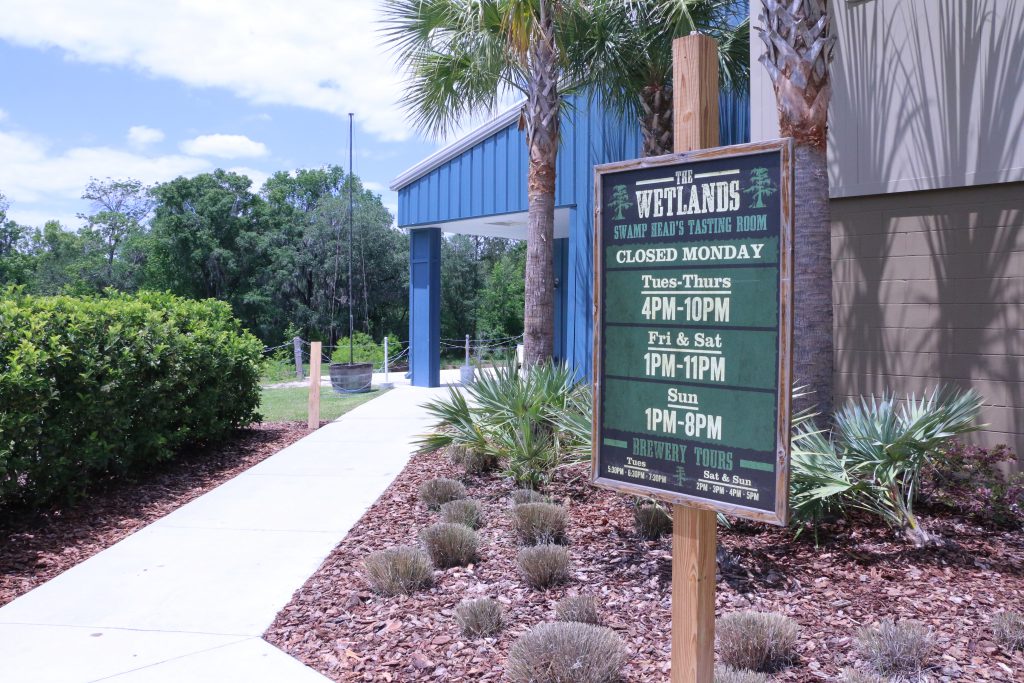
The entrance to Swamp Head Brewery’s Tasting Room: The Wetlands
The Beginning of the Wetlands
When Swamp Head Brewery began, Florida’s laws were somewhat nebulous about the existence of tasting rooms at a brewery. When Luke went to apply for permits to open The Wetlands, Swamp Head’s tasting room, that permit was originally denied. “Gainesville did not agree with the same regulations as the state. When I applied to open my tasting room, the folks in Gainesville denied me, and sent my paperwork to the folks in Tallahassee,” Luke remembers of the delay. “Tallahassee ended up taking 4 or 5 months to get back to me.” For the first two years of Swamp Head Brewery’s life, the beer was only available through distribution. Luke recalls “Swamp Head’s staff stayed small: me, my brewer, and a part-time assistant because it wasn’t feasible to do anything else.” And running a brewery is a lot of work for a staff of two and a half. “We couldn’t get to bars and restaurants and we were so busy just doing what we had to do at the brewery. Then in 2012, the tasting room opened. Gainesville never had anything like it; it was similar to a speakeasy.” While the tasting room was unique, it also allowed Swamp Head to provide a gathering space to the community and showcase local beer. Luke says that the Wetlands “afforded us the visibility for people to actually see us making beer, something tangible right here in Gainesville. It allowed the customer to see another thriving business in Gainesville and for us to tell customers our story.”
That mission now continues at Swamp Head Brewery’s new home at 3650 SW 42nd Avenue in Gainesville – the second home the brewery has built. Swamp Head Brewery moved into its current facility in early 2015 and has been there ever since.
Swamp Head Brewery’s Core Beers
The beers that Swamp Head Brewery originally sent into distribution are the same ones that anchor their core lineup today: Wild Night Honey Cream Ale, Cottonmouth Witbier, Stumpknocker Pale Ale, Big Nose IPA, and Midnight Oil Oatmeal Coffee Stout. Luke remembers establishing those beers fitting them to the brewery’s Floridian theme, “Oddly enough, our core five beers were chosen before the tasting room opened. We just looked at what we thought would do well in the market,” says Luke. “Even before looking at the data, a pale ale, an IPA, and a honey cream ale seemed like easy-drinking beers, plus we wanted to do a beer that incorporated local ingredients like we did with Wild Night. We get our honey from Payne’s Prairie. We also wanted to do a stout – no one else was doing one. Even though it was Florida, so we did an oatmeal coffee stout. At that time, being not too far from college, everyone wanted a sweet wheat beer, so we had Cottonmouth.” While five core beers are a lot to keep up with as a young brewery, Swamp Head’s logic has stood the test of time. Says Luke, “In each bar or restaurant, if they’re a Swamp Head fan, they should find something that is going to fit into their wheelhouse. That was the idea behind the core five.”
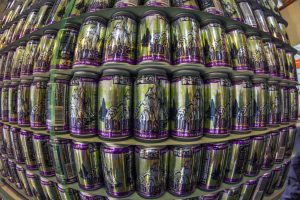
Swamp Head Brewery’s Big Nose IPA cans
Luke is also quick to add that “our lineup is still evolving. The beauty of our lineup is that we can still call those audibles and make quick changes. Just the other day, we were talking about how we were going to redo our release calendar. We are changing things around. Not only are our palates changing, but our customers’ palates are changing as well. The consumer is evolving. At the end of the day, we make beers that we love to drink, and as our palates change, some of those beers are going to change as well.” While Swamp Head has grown and changed from the early days, Luke knows that the brewery’s tasting room gives them an advantage in crafting new brews. “The tasting room affords us the ability for a lot of pilot beers and testing and R & D, and that’s something we look at before we put something in the market.”
Will Swamp Head’s core beers ever change? Luke is somewhat murky on the subject. “As far as changing the core five, we have a few ideas about changes but while we’re figuring it out, we have to keep that quiet. Those secrets are secret… for now.”
Swamp Head’s Message and Mission
Luke asserts that what the brewery does is not isolated to Gainesville or the state of Florida – Swamp Head’s mission is more than that. “Part of our responsibility with this company is to be responsible and not just to take and pillage from the earth but also to give back and to preserve the earth for future generations,” asserts Luke. “A lot of what we do aligns with people’s values – people who like to go outside fishing, hunting, camping. We like to align ourselves with groups that have a like-minded focus.” Luke stresses that he wants the company to have great liquid, but also to align with core values. “When a consumer looks to make a purchase, they are looking more and more for a company that aligns with their values, and we are making a conscious effort to show and talk about our ideals. We have always supported these projects and causes, but now we are trying to make more of an effort to talk about them. It’s not just a beer brand, it’s a lifestyle.” While the brewery does a lot of work in the community because it’s the right thing to do, they want more people to join the cause and they are working to spread that message. “At the end of the day, people are looking at who they’re buying from and who they want to support, so you have to say, ‘This is what we’re about; this is what we do.’” This message gets out into the community and Luke says he has seen the message resonate when people come back into the brewery. “It’s the same thing when people want to work here. They tell us they like the work we do with community groups in Gainesville and our sustainability message. That gets me excited. But we know that we need to work to get that message into the community.”
Swamp Head Brewery’s sustainability mission goes beyond the facility and into the beer, too. Luke says that this is a large part of the decision to can beer. “For me, cans were the way to go because of transportation and logistics,” Luke says. “They’re lighter so they use less gasoline to get here. Smaller carbon footprint. Florida is a giant peninsula surrounded by beaches, pools, and golf courses and a lot of those places are not glass-friendly. If you want the active outdoor folks to enjoy your beer, then the can is ideal.”
“Putting our money where our mouth is”
Luke says that of all the work Swamp Head Brewery does, commitment to the environment and making quality and consistent beer are the priorities.
Swamp Head Brewery’s facility is living proof of these values, starting with the commitment to the environment. Luke proudly shows that “We have seven acres with the brewery, and we have put an acre into conservation on the west side, which is where our tasting room looks. That land backs up to wetlands, so the view should never change.” Swamp Head Brewery also has another unique feature for a Florida brewery: Swamp Head was the first brewery in Florida to install solar panels. Those solar panels were important to Swamp Head’s mission, says Luke and a feature he had to have at this building, Swamp Head Brewery’s second home. “Once we moved here, we were working with an accountant, and she asked us if we were putting solar panels on the brewery, expecting it to be an easy box to check ‘no.’ I said ‘we’re going to have to do this. We’ve been talking about it for years.’ She told us it was not a good idea. I told her that it may not be a good idea, but we couldn’t just talk about doing something good and then not follow through. We had to put our money where our mouths were.”
That mandate also extends to creating quality and consistent beers, as evidenced by Swamp Head Brewery’s Quality Assurance Lab Program. According to Swamp Head’s Director of Operations Nick Dunn, the brewery’s lab keeps samples of every batch of beer and “any time there’s a complaint, we will pull the can and go check it out. If it’s draft, we’ll go to the can date, which will be the tank date and we always have a sample of our batches.” This process and commitment to quality give the brewery confidence in every batch of Swamp Head Brewery beer that goes out the door.
Nick says that the one thing he is proudest of during his tenure at Swamp Head Brewery – Nick became head brewer when Birkmaier departed Swamp Head – “We never tried to hedge a cost. Some brewers get bigger and have to look at changing recipes to save on the cost of hops. Nothing has ever been shaved in that direction.” Nick says that all of the brewery’s changes have been focused on something else: getting better at making beer. “We’ve changed processes to be more efficient. But the process is the only place – we’ve never taken anything away from the beer. We used to dry-hop for seven days. It takes a lot of time to do that. Now we will spin a beer for 24-48 hours and it will have the same effect. The beer has the same contact time and produces the same result, it just happens much faster.” These changes make better beer, or the beer does not go out the door, Nick says. “We will change, and we will always be spending top notch on hop contracts, hops, yeast health, and dumping beers that don’t make the cut. We will make sure we are responsible towards our brand. We will pay what we have to pay to get the beer that we want to make.”
